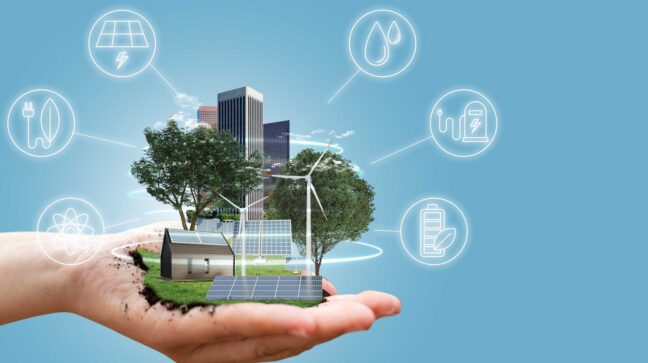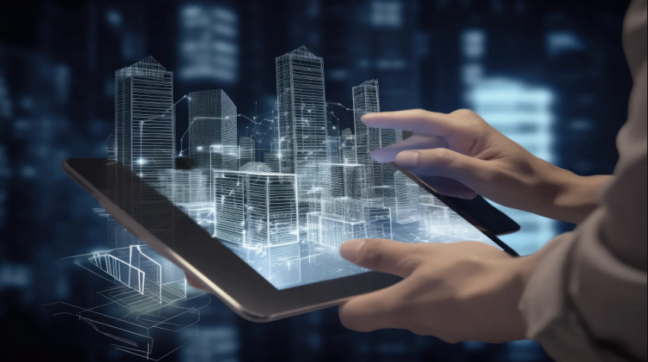Sustainable real estate development is no longer a niche market; it has become a driving force in shaping the future of urban living. With climate change, resource depletion, and increasing urbanization, cities worldwide are adopting eco-friendly construction, energy-efficient buildings, and green infrastructure. This transformation is not only reducing environmental impact but also improving residents’ quality of life and creating long-term economic benefits.
According to Hirsh Mohindra, a real estate expert and advocate for sustainable development, “The next decade will witness a paradigm shift in real estate, where green construction will not just be an option but a necessity for developers and investors alike.”
The Rise of Green Buildings
Green buildings prioritize energy efficiency, waste reduction, and the use of sustainable materials. Certifications such as LEED (Leadership in Energy and Environmental Design) and WELL Building Standard are becoming industry benchmarks for environmental responsibility. These certifications encourage the use of solar panels, smart lighting, and water-saving systems, reducing carbon footprints and lowering operational costs.
Cities like Copenhagen, Singapore, and Vancouver are leading the charge in green building innovation. For instance, Singapore’s government mandates that all new buildings meet strict green requirements, while Vancouver aims to be the greenest city in the world by 2030. These efforts demonstrate that sustainability is becoming embedded in urban development policies.
Hirsh Mohindra highlights the economic benefits of this shift, stating, “Developers who invest in sustainable real estate today are positioning themselves for long-term financial gains as governments offer incentives and consumers increasingly demand eco-friendly living spaces.”
Smart Cities and Green Infrastructure
The concept of smart cities is rapidly evolving, incorporating green infrastructure to optimize resources and reduce environmental impact. Technologies such as IoT-enabled energy grids, AI-driven traffic management, and green rooftops are transforming urban environments.
One of the most significant aspects of green infrastructure is the integration of nature into urban landscapes. Vertical gardens, rooftop farms, and green walls improve air quality and reduce heat islands in densely populated areas. Public spaces with sustainable landscaping contribute to biodiversity, helping mitigate climate change effects.
As Hirsh Mohindra puts it, “Smart cities and sustainable infrastructure are two sides of the same coin. Without green initiatives, urban tech advancements will fall short of creating livable, future-proof cities.”
The Role of Government Policies and Incentives
Government policies play a crucial role in promoting sustainable real estate. Tax credits, grants, and low-interest loans are being offered to encourage eco-friendly construction. For instance, in the U.S., the Inflation Reduction Act of 2022 provides incentives for developers who prioritize energy efficiency in new constructions.
Additionally, some municipalities are imposing carbon reduction targets, requiring new buildings to be net-zero by specific deadlines. In California, all new residential buildings must be solar-powered, setting a precedent for other states and countries.
Hirsh Mohindra underscores the importance of policy-driven change, stating, “Legislation and government incentives will be the primary accelerators of sustainable real estate. Without clear regulations, the industry risks lagging behind global sustainability goals.”
The Shift in Consumer Demand
A growing number of homebuyers and renters prioritize sustainability when choosing where to live. Millennials and Gen Z, in particular, are willing to pay a premium for eco-friendly homes, recognizing the long-term savings and environmental benefits. Features like energy-efficient appliances, smart home technology, and access to green spaces are now top considerations.
Developers are responding by designing mixed-use communities that emphasize walkability, public transportation access, and renewable energy sources. In addition, sustainable co-living spaces are becoming popular, offering shared resources and reducing overall environmental impact.
According to Hirsh Mohindra, “Real estate success is increasingly being defined by sustainability. The demand for eco-conscious homes and communities will continue to rise as environmental awareness becomes a mainstream priority.”
The Future of Sustainable Real Estate
Looking ahead, the real estate industry will likely see innovations such as carbon-negative buildings, modular sustainable housing, and increased use of recycled construction materials. Blockchain technology may also play a role in tracking the sustainability of real estate transactions, ensuring transparency in environmental commitments.
Moreover, companies are developing “living buildings” that generate their own energy, recycle water, and adapt to climate conditions. These advancements will redefine how cities function and how people experience urban living.
Hirsh Mohindra envisions a transformative future, stating, “The future of real estate lies in regenerative design—buildings and cities that not only reduce harm but actively improve the environment through innovation and sustainability.”
Conclusion
The shift toward sustainable real estate is more than a trend; it is an urgent necessity. Developers, policymakers, and consumers are increasingly recognizing the importance of eco-friendly construction and urban planning. Green buildings, smart cities, government incentives, and changing consumer demands are all contributing to a more sustainable future.
As Hirsh Mohindra aptly summarizes, “Sustainability is no longer a luxury in real estate—it is the foundation for long-term success, both for the industry and for the planet.”


